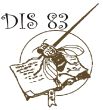
Kopp, Artyom, and Ian Duncan. 2000. Technical tips for analyzing gene expression in the pupal abdomen of Drosophila. Dros. Inf. Serv. 83: 196-197.
|
|
|
|||
Technical tips for analyzing gene expression in the pupal abdomen of Drosophila.
Kopp, Artyom, and Ian Duncan. Department of Biology, Washington University, St. Louis, MO 63130.
The adult abdomen of Drosophila
is a useful model for the study of pattern formation, cell migration, and
ectoderm-mesoderm communication. Abdominal
epidermis is formed during the first two days of prepupal/pupal development
(Madhavan and Madhavan, 1980). Unfortunately,
this is the least accessible, and therefore the least studied, stage of the
fly life cycle. Thus, despite
some recent successes (Shirras and Couso, 1996; Lawrence et al., 1999; Kopp et al., 1999), little remains known about abdominal development
and patterning. Here, we describe
some technical tips for analyzing gene expression in the pupal abdomen.
1. Allow larvae to pupate on a Kimwipe or a piece of paper towel. Select pupae at the appropriate stage
of development (description of pupal stages can be found in Ashburner, 1989)
and attach them to a piece of sticky tape (3M packing tape or FedEx address
stickers offer the best grip). Cut
pupae longitudinally along the dorsoventral or lateral midline with a razor
blade. This is a very critical
step. Use gentle sawing motion,
with as little downward pressure as possible, to avoid disturbing the internal
contents of the pupa; a properly cut pupa will look almost intact. We recommend using high-quality shaving
(not industrial) razor blades.
2. Remove pupae from the pupal cases and place them in an Eppendorf
tube containing 1 ml of the appropriate buffer. For antibody staining and RNA in situ
hybridization, keep the tube on ice and do not cut more than 10-15 pupae at
a time before placing them in buffer.
3. Once enough pupae are accumulated, rock the tube forcefully
but smoothly by hand for 30-60 seconds.
This step removes most internal organs and prevents them from being
attached to the epidermis during fixation. It is important to rock the tube "just right": too
much force will destroy the epidermis, while too little force will leave it
obscured by the fat body, which will harden during fixation and become impossible
to remove.
4. Let the pupal body walls (which should become mostly transparent)
settle to the bottom of the tube, change the buffer, and fix the pupae as
required. We recommend 30 minutes
in 5% formaldehyde for RNA hybridization; 10-30 minutes in 2-4% formaldehyde
for antibody staining (depending on the particular antibody); and 10 minutes
in 1% glutar aldehyde for X-Gal staining. X-Gal staining may be performed without further dissection.
5. For antibody staining or RNA in situ hybridization,
stain the pupae in 0.5% Eosin Y in the appropriate buffer for several minutes
to make pupal tissues visible. If fluorescent microscopy is to follow, use 0.02% Methylene
Blue or Toluidine Blue instead, as these dyes do not fluoresce on any of the
three standard channels. Wash
the pupae briefly and place them in a depression glass under a dissecting
microscope to assess the condition of the abdominal epidermis. Select the pupae in which the epidermis
is intact, and remove the remainder of the fat body and muscles with fine
forceps.
6. Proceed with the staining. For RNA in situ hybridization, use the lowest
temperature possible; harsh hybridization regime may destroy the fragile epidermis.
Proteinase treatment should be kept to a minimum, as it tends to strip
the epidermis off the basal membrane.
7. Stained material may be dehydrated in an ethanol series and
stored indefinitely in 100% ethanol at -20°C. For mounting, rehydrate the pupae gradually
in PBS, excise the appropriate part of the abdomen with microsurgical scissors
(Storz Ophthalmic Instruments), and mount in 80% glycerol/20% PBS for transmission
microscopy, or Vectashield (Vector) for fluorescent microscopy.
Nomarski optics is useful for visualizing the outlines of individual
cells.
References: Ashburner, M., 1989, Drosophila: A Laboratory Handbook. Cold Spring Harbor Laboratory Press; Kopp, A.K., R.K. Blackman, and I. Duncan 1999, Development 126: 3495-3507; Lawrence, P.A., J. Casal, and G. Struhl 1999, Development 126: 2441-2449; Madhavan, M.M., and K. Madhavan 1980, J. Embryol. Exp. Morph. 60: 1-31; Shirras, A.D., and J.P. Couso 1996, Dev. Biol. 175: 24-36.